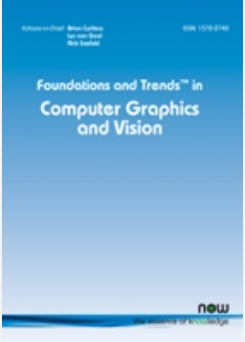Deep Learning for Multimedia Forensics
IF 9.3
Q2 COMPUTER SCIENCE, INTERDISCIPLINARY APPLICATIONS
引用次数: 7
Abstract
In the last two decades, we have witnessed an immense increase in the use of multimedia content on the internet, for multiple applications ranging from the most innocuous to very critical ones. Naturally, this emergence has given rise to many types of threats posed when this content can be manipulated/used for malicious purposes. For example, fake media can be used to drive personal opinions, ruining the image of a public figure, or for criminal activities such as terrorist propaganda and cyberbullying. The research community has of course moved to counter attack these threats by designing manipulation-detection systems based on a variety of techniques, such as signal processing, statistics, and machine learning. This research and practice activity has given rise to the field of multimedia forensics. The success of deep learning in the last decade has led to its use in multimedia forensics as well. In this survey, we look at the latest trends and deep-learning-based techniques introduced to solve three main questions investigated in the field of multimedia forensics. We begin by examining the manipulations of images and videos produced with editing tools, reporting the deep-learning approaches adopted to Irene Amerini, Aris Anagnostopoulos, Luca Maiano and Lorenzo Ricciardi Celsi (2021), “Deep Learning for Multimedia Forensics”, Foundations and Trends® in Computer Graphics and Vision: Vol. 12, No. 4, pp 309–457. DOI: 10.1561/0600000096. Full text available at: http://dx.doi.org/10.1561/0600000096多媒体取证的深度学习
在过去的二十年里,我们目睹了互联网上多媒体内容使用的巨大增长,从最无害的应用到非常重要的应用。当然,当这些内容可以被操纵/用于恶意目的时,这种出现会带来许多类型的威胁。例如,假媒体可以用来推动个人观点,破坏公众人物的形象,或者用于恐怖主义宣传和网络欺凌等犯罪活动。当然,研究界已经开始通过设计基于各种技术(如信号处理、统计学和机器学习)的操纵检测系统来反击这些威胁。这种研究和实践活动催生了多媒体取证领域。在过去十年中,深度学习的成功也导致了它在多媒体取证中的应用。在本调查中,我们将介绍最新趋势和基于深度学习的技术,以解决多媒体取证领域的三个主要问题。我们首先检查使用编辑工具制作的图像和视频的操作,报告Irene Amerini, Aris Anagnostopoulos, Luca Maiano和Lorenzo Ricciardi Celsi(2021)采用的深度学习方法,“多媒体取证的深度学习”,计算机图形学和视觉的基础和趋势®:第12卷,第4期,第309-457页。DOI: 10.1561 / 0600000096。全文可在:http://dx.doi.org/10.1561/0600000096
本文章由计算机程序翻译,如有差异,请以英文原文为准。
求助全文
约1分钟内获得全文
求助全文
来源期刊

Foundations and Trends in Computer Graphics and Vision
COMPUTER SCIENCE, INTERDISCIPLINARY APPLICATIONS-
CiteScore
31.20
自引率
0.00%
发文量
1
期刊介绍:
The growth in all aspects of research in the last decade has led to a multitude of new publications and an exponential increase in published research. Finding a way through the excellent existing literature and keeping up to date has become a major time-consuming problem. Electronic publishing has given researchers instant access to more articles than ever before. But which articles are the essential ones that should be read to understand and keep abreast with developments of any topic? To address this problem Foundations and Trends® in Computer Graphics and Vision publishes high-quality survey and tutorial monographs of the field.
Each issue of Foundations and Trends® in Computer Graphics and Vision comprises a 50-100 page monograph written by research leaders in the field. Monographs that give tutorial coverage of subjects, research retrospectives as well as survey papers that offer state-of-the-art reviews fall within the scope of the journal.
 求助内容:
求助内容: 应助结果提醒方式:
应助结果提醒方式:


